 Russia on Sunday confirmed it had shut for “security reasons” an Arctic border post with Norway to migrants being controversially returned from the Nordic country. Norway on Saturday said it was temporarily halting its return of migrants — mainly from Syria, Afghanistan, Iran and Iraq — who had entered from Russia following a request from the authorities there.Some 5,500 migrants crossed from Russia into Norway last year, on the last leg of an arduous journey through the Arctic to Europe.
Russia on Sunday confirmed it had shut for “security reasons” an Arctic border post with Norway to migrants being controversially returned from the Nordic country. Norway on Saturday said it was temporarily halting its return of migrants — mainly from Syria, Afghanistan, Iran and Iraq — who had entered from Russia following a request from the authorities there.Some 5,500 migrants crossed from Russia into Norway last year, on the last leg of an arduous journey through the Arctic to Europe.
But the right-wing government in Oslo has decided that migrants who had been living legally in Russia, or had entered Russia legally, should be immediately returned there, on the basis that Russia is a safe country.
Russian foreign ministry spokeswoman Maria Zakharova told AFP that Moscow had informed Norway on Friday that it was halting the return of migrants through the Borisoglebsk-Storskog crossing in line with a 2011 bilateral agreement.
Exceptions will, however, be made for any migrants who can be shown to meet the criteria of an earlier agreement that obliges Moscow to readmit them if they do not fulfil Norwegian immigration laws and have valid Russian visas or residence permits.
“The steps taken by Russia were dictated by security reasons and based on bilateral agreements with Norway,” Zakharova said.
Norwegian police returned 13 migrants by bus to Russia on Tuesday and two similar operations were scheduled for Thursday and Friday but were then cancelled, for what officials said were logistical reasons.
The foreign ministry in Norway said there would be no more returns “until further notice” and that Russian border authorities “want more coordination” in future.
Rights groups had expressed outrage at the migrants being forced to return by bike in winter, when temperatures in the far north regularly fall to minus 20 degrees Celsius (minus four Fahrenheit).
They also say that Russia has a poor record on dealing with requests for asylum, with the process sometimes taking years and applicants running the risk of being arrested and expelled to their country of origin.
Norway is not within the European Union, but is a member of the Schengen passport-free zone.
Many migrants arrived in the country by bicycle as Russian authorities do not let people cross the border on foot and Norway considers people driving migrants across the border in a car or truck to be traffickers.
(digitaljournal)


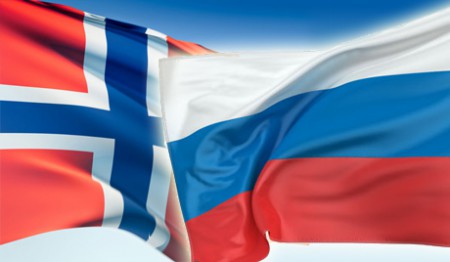
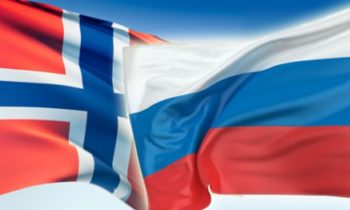 Thomas Nilsen, the former editor of an online newspaper in Arctic Norway who was recently fired, may have been a victim of Norway’s unusual relationship with Russia in the Arctic, suggests a piece in the BBC Magazine. Nilsen was fired from the BarentsObserver in late September.
Thomas Nilsen, the former editor of an online newspaper in Arctic Norway who was recently fired, may have been a victim of Norway’s unusual relationship with Russia in the Arctic, suggests a piece in the BBC Magazine. Nilsen was fired from the BarentsObserver in late September.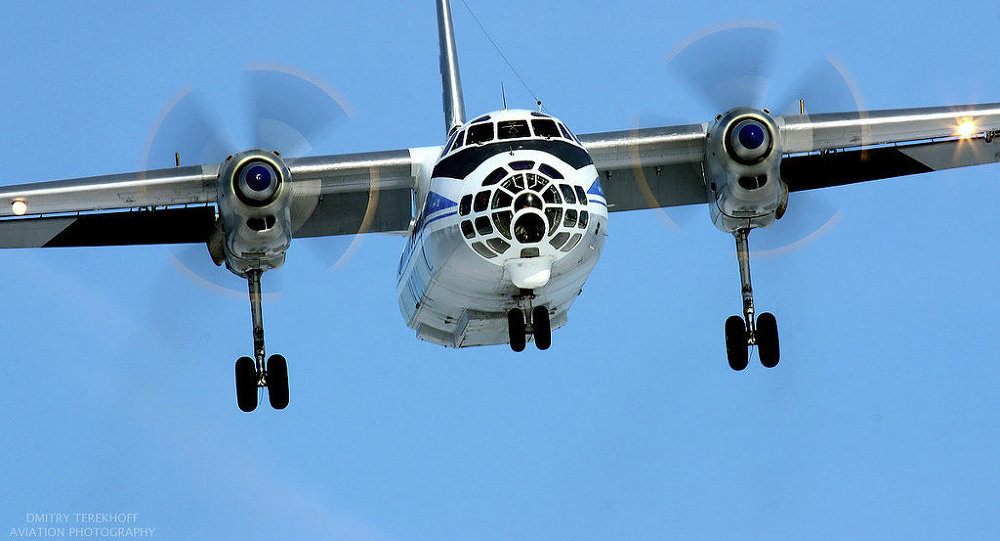
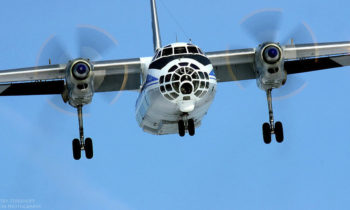 Russian experts will conduct an aerial surveillance flight over Norway in an An-30 cartography aircraft within the scope of the Treaty on Open Skies, the head of Russia’s Nuclear Risk Reduction Center said on Monday.”The surveillance flight with a maximum range of 1,700 kilometers (1,056 miles) will take place between November 23-27, taking off from Bardufoss Airport,” Sergei Ryzhkov said.
Russian experts will conduct an aerial surveillance flight over Norway in an An-30 cartography aircraft within the scope of the Treaty on Open Skies, the head of Russia’s Nuclear Risk Reduction Center said on Monday.”The surveillance flight with a maximum range of 1,700 kilometers (1,056 miles) will take place between November 23-27, taking off from Bardufoss Airport,” Sergei Ryzhkov said.
 Norway has set itself up against Russia, and therefore we are being punished, says Aftenposten’s former editor, Kjell Dragnes. Norway has objected against the superpower, the neighbour in the East, and we are simply being punished for it, says Dragnes to NRK. Dragnes was until recently editor of foreign affairs for Aftenposten, and he has been Moscow correspondent for the newspaper twice.
Norway has set itself up against Russia, and therefore we are being punished, says Aftenposten’s former editor, Kjell Dragnes. Norway has objected against the superpower, the neighbour in the East, and we are simply being punished for it, says Dragnes to NRK. Dragnes was until recently editor of foreign affairs for Aftenposten, and he has been Moscow correspondent for the newspaper twice.
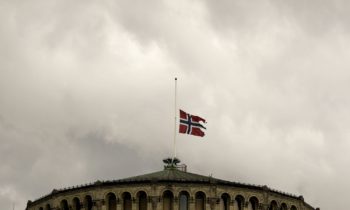 Norwegian authorities say that Russians are blackmailing government workers, including MPs, into revealing state secrets by tricking them with duplicitous gifts like vodka and attractive women—a well-known strategy from the Cold War era.The head of counterintelligence for Norway’s Police Security Service, Arne Christian Haugstøyl, told state broadcaster NRK (link in Norwegian) that a growing number of Norwegians have been coming forward to report they have fallen into traps set by Russian spy agencies. He called the trend “alarming” and said Norwegian officials “must be more aware of” the problem.
Norwegian authorities say that Russians are blackmailing government workers, including MPs, into revealing state secrets by tricking them with duplicitous gifts like vodka and attractive women—a well-known strategy from the Cold War era.The head of counterintelligence for Norway’s Police Security Service, Arne Christian Haugstøyl, told state broadcaster NRK (link in Norwegian) that a growing number of Norwegians have been coming forward to report they have fallen into traps set by Russian spy agencies. He called the trend “alarming” and said Norwegian officials “must be more aware of” the problem.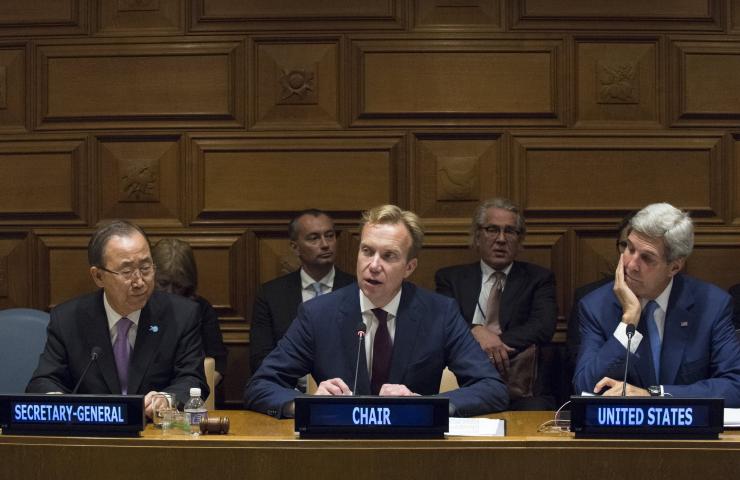
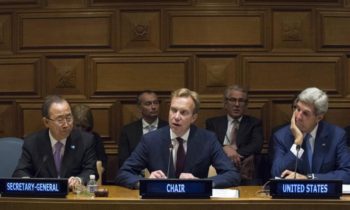 With Russia’s military buildup in the Arctic, Norway said Thursday it needed to modernize its defenses, Reuters reported. Norway, a NATO member state, shares a small border with Russia in the Arctic where there has been increased military activity.“Our neighbor in the east has built up its military capacity, also in areas close to us,” said Admiral Haakon Bruun-Hanssen of Norway’s navy. “They have shown that they are willing to use military force to achieve political ambitions.”
With Russia’s military buildup in the Arctic, Norway said Thursday it needed to modernize its defenses, Reuters reported. Norway, a NATO member state, shares a small border with Russia in the Arctic where there has been increased military activity.“Our neighbor in the east has built up its military capacity, also in areas close to us,” said Admiral Haakon Bruun-Hanssen of Norway’s navy. “They have shown that they are willing to use military force to achieve political ambitions.”
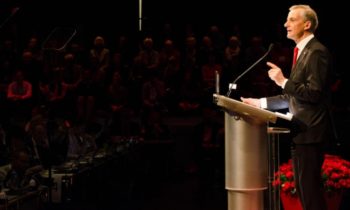 Norway’s opposition leader is worried that Olso is wearing down the country’s once close relations with Moscow. Norway’s opposition leader has criticised that country’s current government for failing to maintain good relations with Russia.Jonas Gahr Støre, the head of Arbejderpartiet, and the former foreign minister, agreed that Oslo ought to take a hard-line against Moscow over its involvement in eastern Ukraine, but said in an interview with Klassekampen, a left-leaning newspaper, that this should not come at the expense of good overall relations.
Norway’s opposition leader is worried that Olso is wearing down the country’s once close relations with Moscow. Norway’s opposition leader has criticised that country’s current government for failing to maintain good relations with Russia.Jonas Gahr Støre, the head of Arbejderpartiet, and the former foreign minister, agreed that Oslo ought to take a hard-line against Moscow over its involvement in eastern Ukraine, but said in an interview with Klassekampen, a left-leaning newspaper, that this should not come at the expense of good overall relations.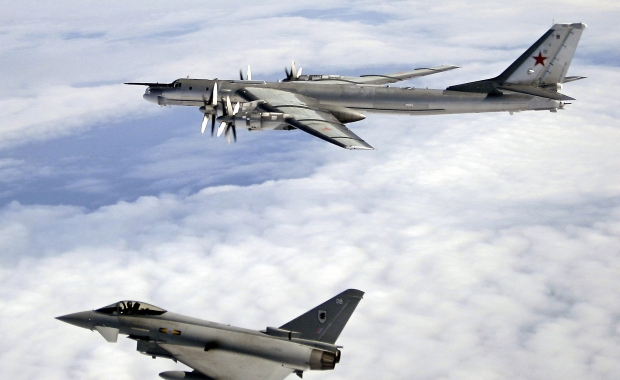
 The growing Russian military presence in the Arctic and North Atlantic has increased the strategic significance of Iceland. All nations of Northern Europe must work together to counter the growing threat a Norwegian defence expert argues.Growing Russian presence in the North Atlantic
The growing Russian military presence in the Arctic and North Atlantic has increased the strategic significance of Iceland. All nations of Northern Europe must work together to counter the growing threat a Norwegian defence expert argues.Growing Russian presence in the North Atlantic
 The area above the Arctic Circle is finally getting some attention from western politicians, after Barack Obama’s presidential trip to Alaska and a global climate change conference there. Sure, any jolt of activity is likely a welcome occurrence in these far northern communities, but barring sparse high-profile visits, towns and villages in the Arctic nurture and cultivate local economies on their own.A 60-kilometer wide no-visa zone in the Barents Region, halfway across the Arctic Circle from Alaska, is one tool that locals use to spur economic activity. Spanning both sides of the Norwegian-Russian border, this no-visa zone exists to fuel business collaborations and regional trade there.
The area above the Arctic Circle is finally getting some attention from western politicians, after Barack Obama’s presidential trip to Alaska and a global climate change conference there. Sure, any jolt of activity is likely a welcome occurrence in these far northern communities, but barring sparse high-profile visits, towns and villages in the Arctic nurture and cultivate local economies on their own.A 60-kilometer wide no-visa zone in the Barents Region, halfway across the Arctic Circle from Alaska, is one tool that locals use to spur economic activity. Spanning both sides of the Norwegian-Russian border, this no-visa zone exists to fuel business collaborations and regional trade there.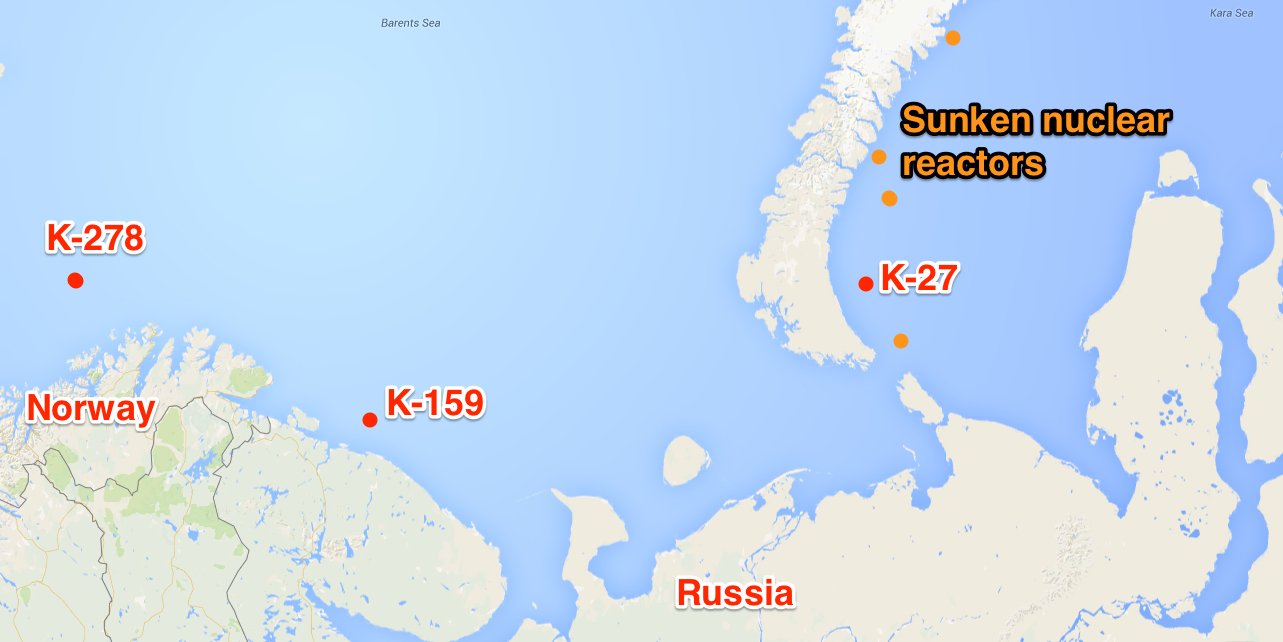
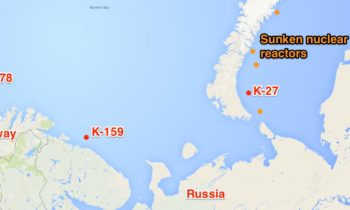 Russian customs has for the last 10 months held in impound samples from a sunken nuclear submarine that Russian scientists sent to their Norwegian counterparts to confirm whether the wreck poses any radiological hazards, Norwegian media have reported.The Norwegian Radiation Protection Authority (NRPA), which has participated in several joint missions with Russian authorities to determine whether the sunken K-159 Soviet-built nuclear submarine poses radiological hazards, has requested Norway’s Foreign Minister intervene to secure the samples.
Russian customs has for the last 10 months held in impound samples from a sunken nuclear submarine that Russian scientists sent to their Norwegian counterparts to confirm whether the wreck poses any radiological hazards, Norwegian media have reported.The Norwegian Radiation Protection Authority (NRPA), which has participated in several joint missions with Russian authorities to determine whether the sunken K-159 Soviet-built nuclear submarine poses radiological hazards, has requested Norway’s Foreign Minister intervene to secure the samples.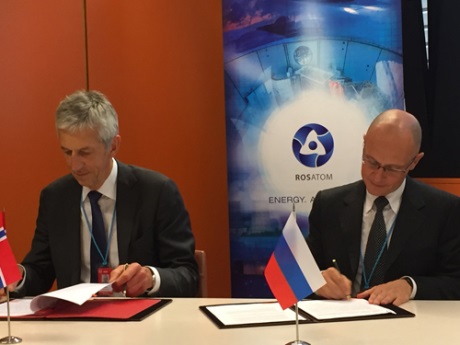
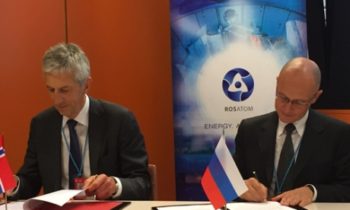 Russia and Norway yesterday signed a protocol on the practical measures required for their inter-governmental agreement on early notification of nuclear accidents and exchange of information on nuclear facilities. The protocol was signed in Vienna during the International Atomic Energy Agency’s General Conference by Rosatom director general Sergey Kirienko and Norwegian Radiation Protection Authority director general Ole Harbitz.The protocol includes new procedures for information exchange on various aspects of nuclear and radiation safety, the Russian state nuclear corporation said. These make the entire process between the two countries more systematized, it added. The new document covers nuclear power plants, including Russia’s Kola and Leningrad nuclear power plants, nuclear reactors aboard ships, fresh and used nuclear fuel storage, as well as research and other reactors located in Norway and within the 300km border with Russia.
Russia and Norway yesterday signed a protocol on the practical measures required for their inter-governmental agreement on early notification of nuclear accidents and exchange of information on nuclear facilities. The protocol was signed in Vienna during the International Atomic Energy Agency’s General Conference by Rosatom director general Sergey Kirienko and Norwegian Radiation Protection Authority director general Ole Harbitz.The protocol includes new procedures for information exchange on various aspects of nuclear and radiation safety, the Russian state nuclear corporation said. These make the entire process between the two countries more systematized, it added. The new document covers nuclear power plants, including Russia’s Kola and Leningrad nuclear power plants, nuclear reactors aboard ships, fresh and used nuclear fuel storage, as well as research and other reactors located in Norway and within the 300km border with Russia.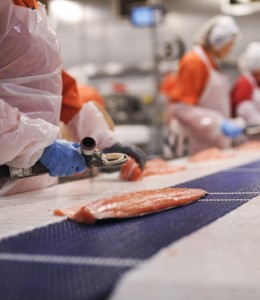
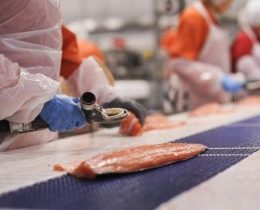 The Norwegian Seafood Federation (FHL) has noted the renewal of Russia’s ban on food imports from some western nations, including its former main salmon supplier Norway, is a concern for long-term trade links. “Some of Russia’s importers have already gone bankrupt, and some are still struggling now,” Trond Davidsen of the FHL told Undercurrent News. “It is a worry for when the market re-opens – more may be gone by the time this ban lifts. We might need to build new relationships once trade begins again.”It all depends on the length of time this ban lasts, he said, but added that Norwegian firms are retaining contacts with Russian importers, as is the FHL itself.
The Norwegian Seafood Federation (FHL) has noted the renewal of Russia’s ban on food imports from some western nations, including its former main salmon supplier Norway, is a concern for long-term trade links. “Some of Russia’s importers have already gone bankrupt, and some are still struggling now,” Trond Davidsen of the FHL told Undercurrent News. “It is a worry for when the market re-opens – more may be gone by the time this ban lifts. We might need to build new relationships once trade begins again.”It all depends on the length of time this ban lasts, he said, but added that Norwegian firms are retaining contacts with Russian importers, as is the FHL itself.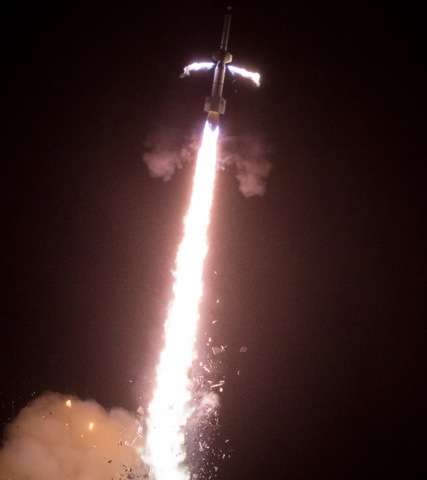
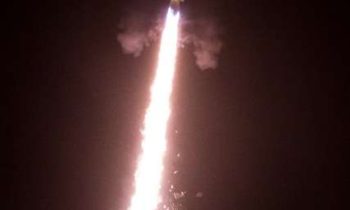 A team of scientists led by Marc Lessard of the University of New Hampshire Space Science Center launched an instrument-laden, four-stage sounding rocket from Norway’s Andøya Space Center about 280 miles above Earth to study how particles move in a region near the North Pole where Earth’s magnetic field is directly connected to the solar wind. The launch occurred Sunday, Dec. 13, at 2:34 a.m. EST.Funded by the National Aeronautics and Space Administration (NASA), the second iteration of the Rocket Experiment for Neutral Upwelling, or RENU 2, was designed to measure the complex, underlying physics behind the northern lights and heating of the very high altitude thermosphere – a process known as “upwelling” that contributes to the phenomena of “satellite drag.”
A team of scientists led by Marc Lessard of the University of New Hampshire Space Science Center launched an instrument-laden, four-stage sounding rocket from Norway’s Andøya Space Center about 280 miles above Earth to study how particles move in a region near the North Pole where Earth’s magnetic field is directly connected to the solar wind. The launch occurred Sunday, Dec. 13, at 2:34 a.m. EST.Funded by the National Aeronautics and Space Administration (NASA), the second iteration of the Rocket Experiment for Neutral Upwelling, or RENU 2, was designed to measure the complex, underlying physics behind the northern lights and heating of the very high altitude thermosphere – a process known as “upwelling” that contributes to the phenomena of “satellite drag.”
 Norwegian air navigation service provider Avinor and Kongsberg Defense Systems entered into an NOK 400 million ($48 million) agreement for the provision of “remote tower” services at multiple airports from one location. The parties described the agreement as the most comprehensive yet for remote tower systems. Avinor had earlier decided to introduce remote tower services at up to 15 airports from one tower center in Bodø in northern Norway.In 2012, the ATC provider signed a contract with Sweden’s Saab to demonstrate remote tower service from that location. The latest agreement with Kongsberg may cover more airports, Avinor said.
Norwegian air navigation service provider Avinor and Kongsberg Defense Systems entered into an NOK 400 million ($48 million) agreement for the provision of “remote tower” services at multiple airports from one location. The parties described the agreement as the most comprehensive yet for remote tower systems. Avinor had earlier decided to introduce remote tower services at up to 15 airports from one tower center in Bodø in northern Norway.In 2012, the ATC provider signed a contract with Sweden’s Saab to demonstrate remote tower service from that location. The latest agreement with Kongsberg may cover more airports, Avinor said.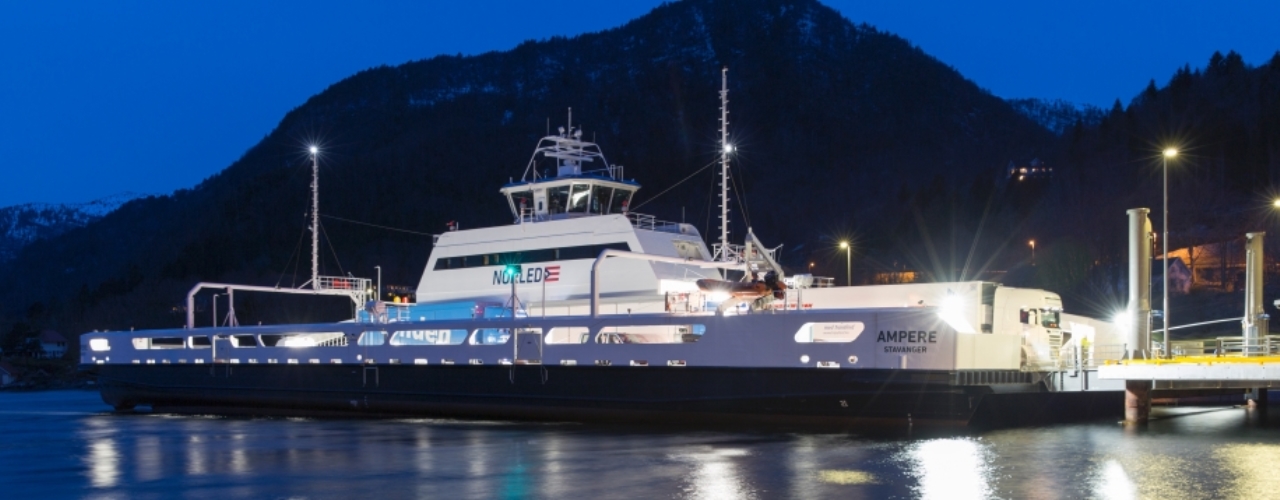
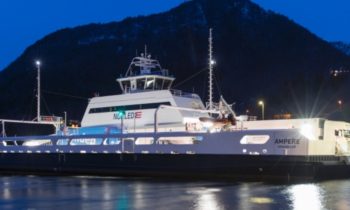 The world’s first electrically powered fishing boat will be presented this August in Trondheim, Norway. But more time and development is needed before it can run completely without diesel. “We hope to pass Vestfjorden fossil-free on 23 August. We will exhibit the week before at the Aqua Nor/ Nor Fishing Trade Fair,” says Erik Ianssen.Ianssen is the general manager of Selfa Arctic. This boat-building outfit has spent the last seven years working on a hybrid version of small fishing boat, a type known in Norway as a sjark – in English, a small smack.
The world’s first electrically powered fishing boat will be presented this August in Trondheim, Norway. But more time and development is needed before it can run completely without diesel. “We hope to pass Vestfjorden fossil-free on 23 August. We will exhibit the week before at the Aqua Nor/ Nor Fishing Trade Fair,” says Erik Ianssen.Ianssen is the general manager of Selfa Arctic. This boat-building outfit has spent the last seven years working on a hybrid version of small fishing boat, a type known in Norway as a sjark – in English, a small smack.
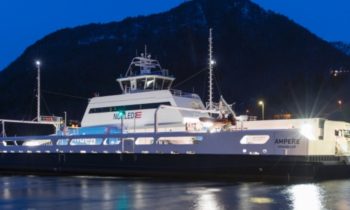 The world’s first electrically powered car and passenger ferry, named Ampere, started service in Norway earlier this year. The ferry, operated by Norled, makes 34 fjord-crossings a day, powered by two electric motors.Each motor is powered by lithium-ion batteries, which are recharged whilst cars and passengers board the ferry at each pier. The ferry only uses 150kWh per route, which corresponds to three days use of electricity of a standard Norwegian household. Conventional ferries in comparison, use approximately one million litres of diesel fuel, and cost up to 60% more to operate. They also emit 2,680 tons of carbon dioxide and 37 tons of nitrogen oxide over the same distance each year.
The world’s first electrically powered car and passenger ferry, named Ampere, started service in Norway earlier this year. The ferry, operated by Norled, makes 34 fjord-crossings a day, powered by two electric motors.Each motor is powered by lithium-ion batteries, which are recharged whilst cars and passengers board the ferry at each pier. The ferry only uses 150kWh per route, which corresponds to three days use of electricity of a standard Norwegian household. Conventional ferries in comparison, use approximately one million litres of diesel fuel, and cost up to 60% more to operate. They also emit 2,680 tons of carbon dioxide and 37 tons of nitrogen oxide over the same distance each year.
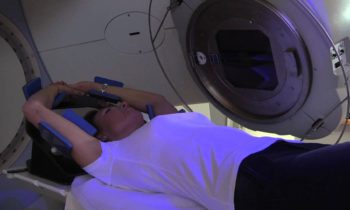 C-RAD secured a large order including two Catalyst HD™ systems and a Sentinel 4DCT™ system for Gjövik Hospital in Norway, about 120 km north of Oslo. As part of a comprehensive tender the hospital is now upgrading its radiation oncology department with the high-end solution for patient positioning and monitoring from C-RAD.The Catalyst HD will be delivered with the complete software configuration containing modules for Respiratory Gating, Patient Setup and Positioning, and Motion Monitoring, as well as interfaces to a Toshiba CT and the linear accelerators. The customer also decided on the unique audio-visual couching functionality that supports an interactive gating mode.
C-RAD secured a large order including two Catalyst HD™ systems and a Sentinel 4DCT™ system for Gjövik Hospital in Norway, about 120 km north of Oslo. As part of a comprehensive tender the hospital is now upgrading its radiation oncology department with the high-end solution for patient positioning and monitoring from C-RAD.The Catalyst HD will be delivered with the complete software configuration containing modules for Respiratory Gating, Patient Setup and Positioning, and Motion Monitoring, as well as interfaces to a Toshiba CT and the linear accelerators. The customer also decided on the unique audio-visual couching functionality that supports an interactive gating mode.
 It’s always good to hear further information about upcoming devices, and readers may have heard some initial murmurings about the BlackBerry Oslo smartphone from Mobile World Congress. Although it was first thought that this handset would only release in China, in fact it will be available for global markets. Read on for more on the BlackBerry Oslo with unofficial details of specs and release date.The new information also comes with an image that is purported to be the first of the BlackBerry Oslo, and you can see that below. The handset shown has a squarish design with rounded corners to the bottom, and you can see it also has a physical QWERTY keyboard. Although nothing has been confirmed from BlackBerry about a release date, it’s being tipped for June 30, so we’re likely to see a few more leaks over the coming few weeks.
It’s always good to hear further information about upcoming devices, and readers may have heard some initial murmurings about the BlackBerry Oslo smartphone from Mobile World Congress. Although it was first thought that this handset would only release in China, in fact it will be available for global markets. Read on for more on the BlackBerry Oslo with unofficial details of specs and release date.The new information also comes with an image that is purported to be the first of the BlackBerry Oslo, and you can see that below. The handset shown has a squarish design with rounded corners to the bottom, and you can see it also has a physical QWERTY keyboard. Although nothing has been confirmed from BlackBerry about a release date, it’s being tipped for June 30, so we’re likely to see a few more leaks over the coming few weeks.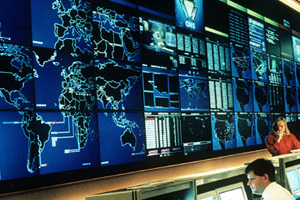
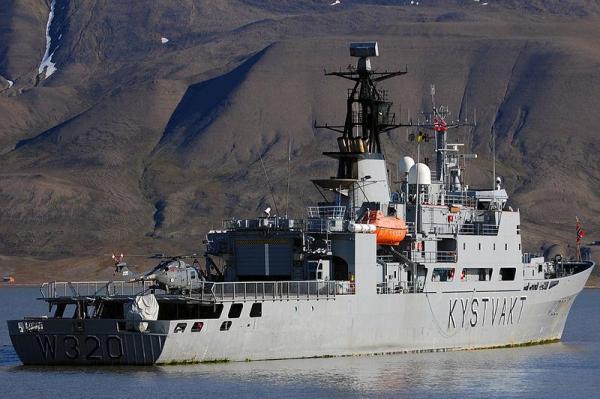
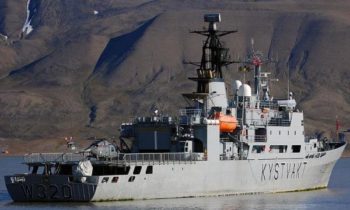 Exelis’ latest command management information system has successfully completed sea acceptance testing aboard A Norwegian Coast Guard ship. The test was part of a modernization program for the KV Senga that includes the integration of the vessel’s tactical data link, upgrading its computer and displays and navigational system. The CMIS system by Exelis, which can be extended to support new sensor packages such as electronic support measures or advanced sonar, is being deployed on at least two other Norwegian ships over the next two years.”Throughout our longstanding relationship with the Norwegian Coast Guard, we have seen how they operate in a particularly dangerous environment,” said Jim Brunelle, senior director of the Exelis undersea systems business. “The Exelis technology enables them to safely control their ships and helicopters in the high seas and challenging weather conditions of the North Atlantic.”
Exelis’ latest command management information system has successfully completed sea acceptance testing aboard A Norwegian Coast Guard ship. The test was part of a modernization program for the KV Senga that includes the integration of the vessel’s tactical data link, upgrading its computer and displays and navigational system. The CMIS system by Exelis, which can be extended to support new sensor packages such as electronic support measures or advanced sonar, is being deployed on at least two other Norwegian ships over the next two years.”Throughout our longstanding relationship with the Norwegian Coast Guard, we have seen how they operate in a particularly dangerous environment,” said Jim Brunelle, senior director of the Exelis undersea systems business. “The Exelis technology enables them to safely control their ships and helicopters in the high seas and challenging weather conditions of the North Atlantic.”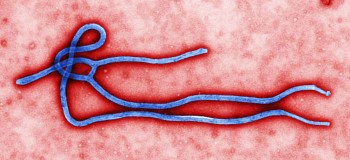
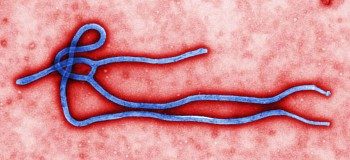 The Norwegian research programme for Global Health and Vaccination Research (GLOBVAC) has on behalf of the Norwegian Ministry of Foreign Affairs contributed financially to an international trial for EBOLA-vaccine. Evaluation of Ebola vaccines in Guineawill be conducted by the World Health Organisation, Doctors Without Borders, the Norwegian Institute of Public Health and others.Given the exceptional nature of the spread of Ebola in West Africa, The Norwegian Ministry of Foreign Affairs and The Norwegian Agency for Development Cooperation (Norad) asked the Research Council of Norway (RCN) to conduct a speedy decision concerning financing this project. The project has its origin from a broad workgroup which has assessed alternative strategies for vaccine trials in Guinea. The RCN will contribute with approximately 3 million dollars to the study.
The Norwegian research programme for Global Health and Vaccination Research (GLOBVAC) has on behalf of the Norwegian Ministry of Foreign Affairs contributed financially to an international trial for EBOLA-vaccine. Evaluation of Ebola vaccines in Guineawill be conducted by the World Health Organisation, Doctors Without Borders, the Norwegian Institute of Public Health and others.Given the exceptional nature of the spread of Ebola in West Africa, The Norwegian Ministry of Foreign Affairs and The Norwegian Agency for Development Cooperation (Norad) asked the Research Council of Norway (RCN) to conduct a speedy decision concerning financing this project. The project has its origin from a broad workgroup which has assessed alternative strategies for vaccine trials in Guinea. The RCN will contribute with approximately 3 million dollars to the study.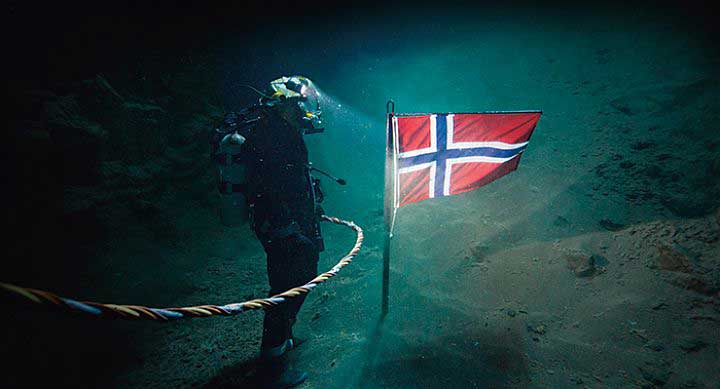
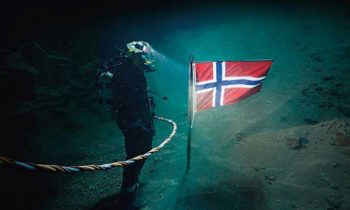 ‘Pioneer,’ from Norwegian director Erik Skjoldbjærg, tells such a complex and convoluted story, you’d think it had to be adhering to true-life events. In reality, the film is “loosely based” on events in the early 1980s in the North Sea, when Norway had just discovered the possibility of harvesting rich deposits of petroleum deep in the seabed. Given the lack of engineering technology available even thirty years ago, this task represented an enormous challenge and a significant danger to the participants.Though the country has a rich history of daring exploration and pioneering, (see: Roald Amundsen and his team’s incredible Antarctic exploration that made them the first to reach the South Pole) they would require the help of an American company, called Deep Sea Diving in the film, to help prepare them for the project. And in a shocking twist of events, the greedy Americans might not have the best interests of the Norwegian divers at heart.
‘Pioneer,’ from Norwegian director Erik Skjoldbjærg, tells such a complex and convoluted story, you’d think it had to be adhering to true-life events. In reality, the film is “loosely based” on events in the early 1980s in the North Sea, when Norway had just discovered the possibility of harvesting rich deposits of petroleum deep in the seabed. Given the lack of engineering technology available even thirty years ago, this task represented an enormous challenge and a significant danger to the participants.Though the country has a rich history of daring exploration and pioneering, (see: Roald Amundsen and his team’s incredible Antarctic exploration that made them the first to reach the South Pole) they would require the help of an American company, called Deep Sea Diving in the film, to help prepare them for the project. And in a shocking twist of events, the greedy Americans might not have the best interests of the Norwegian divers at heart.
 In addition to BMW, which reportedly agreed to purchase a total of 57,000 Windows Phones, Microsoft is about to score another important win for its mobile platform, this time in Norway, where a newly built hospital is looking at its devices for better patient care. A report coming from local publication Tek (Google Translate link) reveals that the so-called Ostfold Hospital will be almost entirely equipped with products developed by Microsoft, including not only Windows Phone devices, but also Kinect sensors.The idea is as easy as it could be. Kinect and Windows Phone can help doctors and nurses provide better care to patients by receiving information on medication wherever they are, including the type of drugs they need to administer and the correct amounts.
In addition to BMW, which reportedly agreed to purchase a total of 57,000 Windows Phones, Microsoft is about to score another important win for its mobile platform, this time in Norway, where a newly built hospital is looking at its devices for better patient care. A report coming from local publication Tek (Google Translate link) reveals that the so-called Ostfold Hospital will be almost entirely equipped with products developed by Microsoft, including not only Windows Phone devices, but also Kinect sensors.The idea is as easy as it could be. Kinect and Windows Phone can help doctors and nurses provide better care to patients by receiving information on medication wherever they are, including the type of drugs they need to administer and the correct amounts.
 NORWAY – Chicken red mites bring both financial and animal welfare problems for the poultry industry but a new academic collaboration has been formed to tackle these challenges. Last week saw the start of a new academic collaboration on chicken mites, which kicked-off in Brussels. The academic collaboration, involving the Veterinary Institute of Norway (NVI), will last for four years. Cooperation in Science and Technology (COST) is a European scientific and technological cooperation that aims to promote academic cooperation and networking between researchers in 36 countries, among them Norway.COST actions can give money to interdisciplinary workshops, conferences, short research stays, publications and other activities associated with the network.
NORWAY – Chicken red mites bring both financial and animal welfare problems for the poultry industry but a new academic collaboration has been formed to tackle these challenges. Last week saw the start of a new academic collaboration on chicken mites, which kicked-off in Brussels. The academic collaboration, involving the Veterinary Institute of Norway (NVI), will last for four years. Cooperation in Science and Technology (COST) is a European scientific and technological cooperation that aims to promote academic cooperation and networking between researchers in 36 countries, among them Norway.COST actions can give money to interdisciplinary workshops, conferences, short research stays, publications and other activities associated with the network.